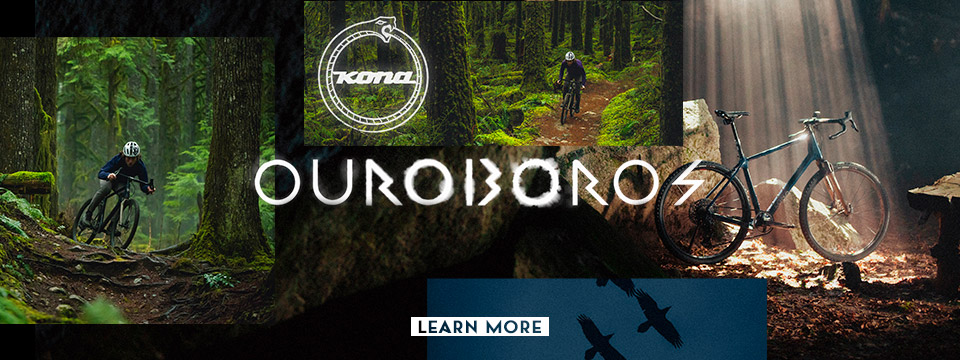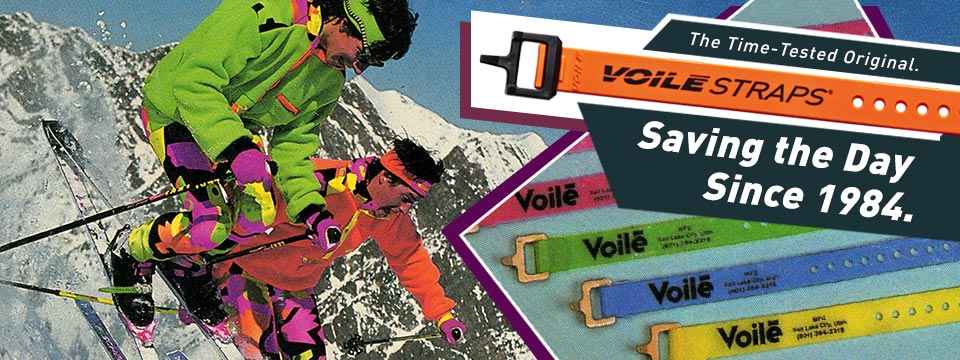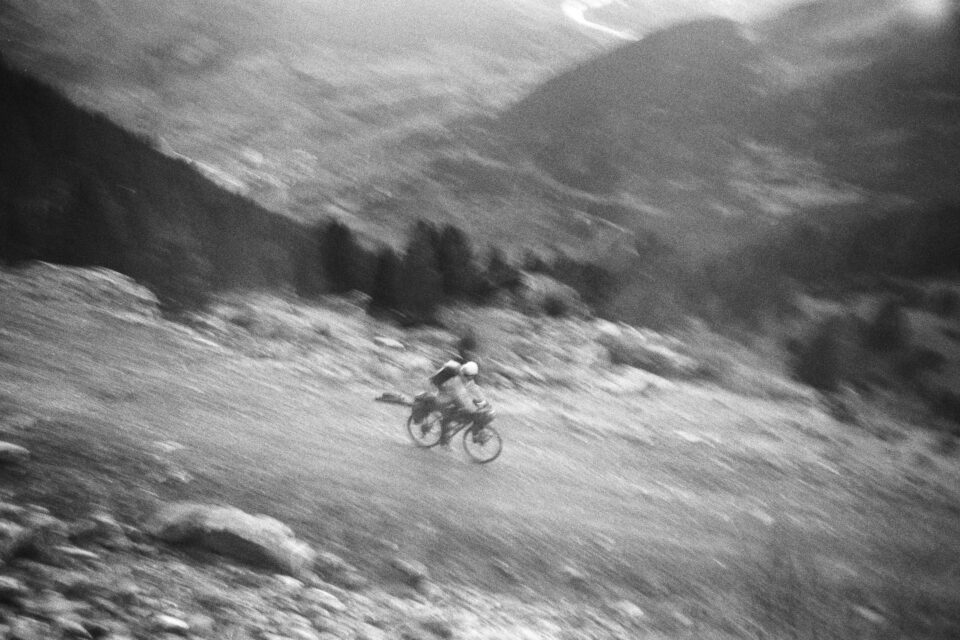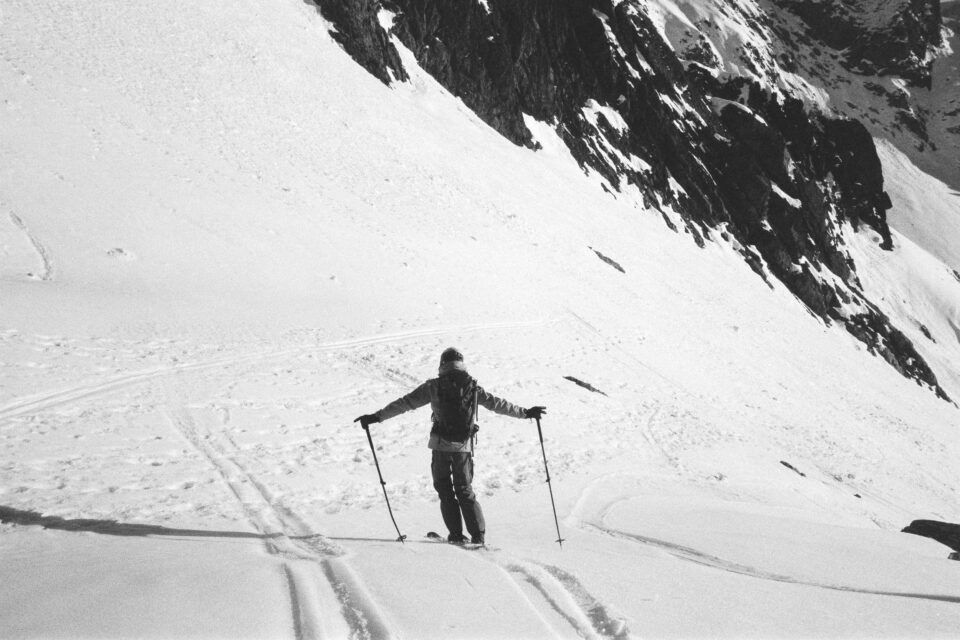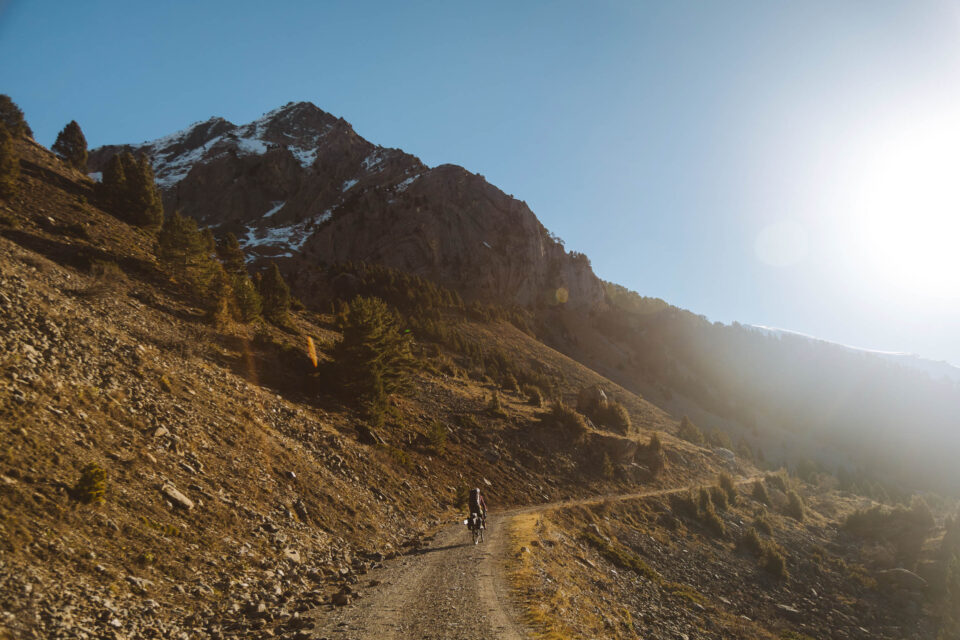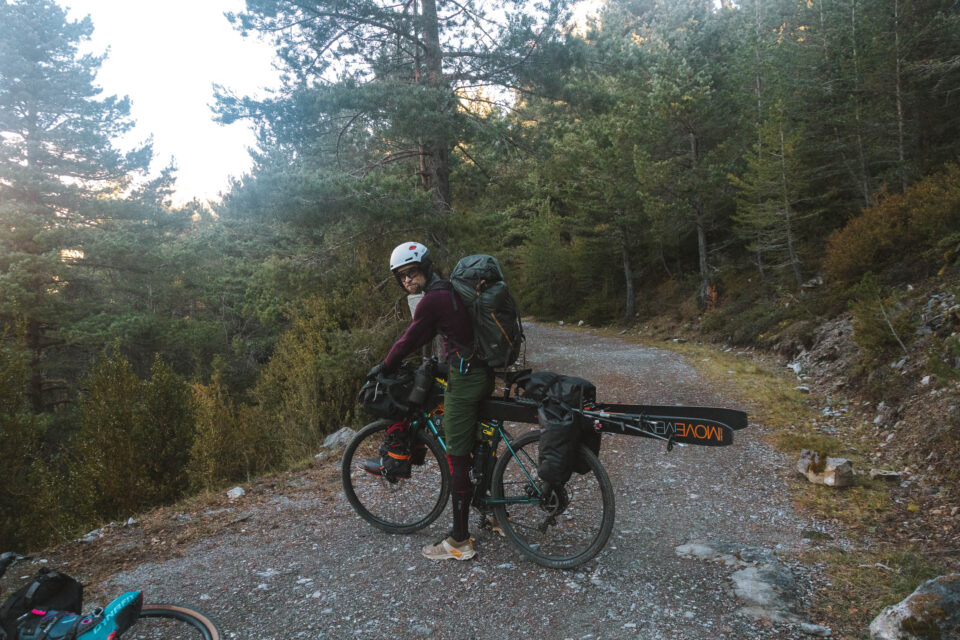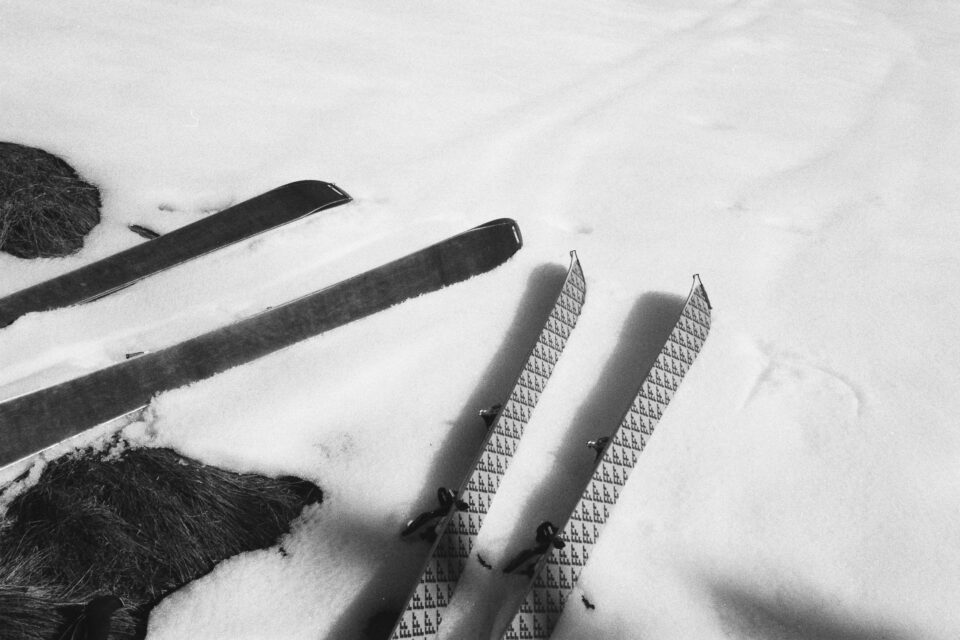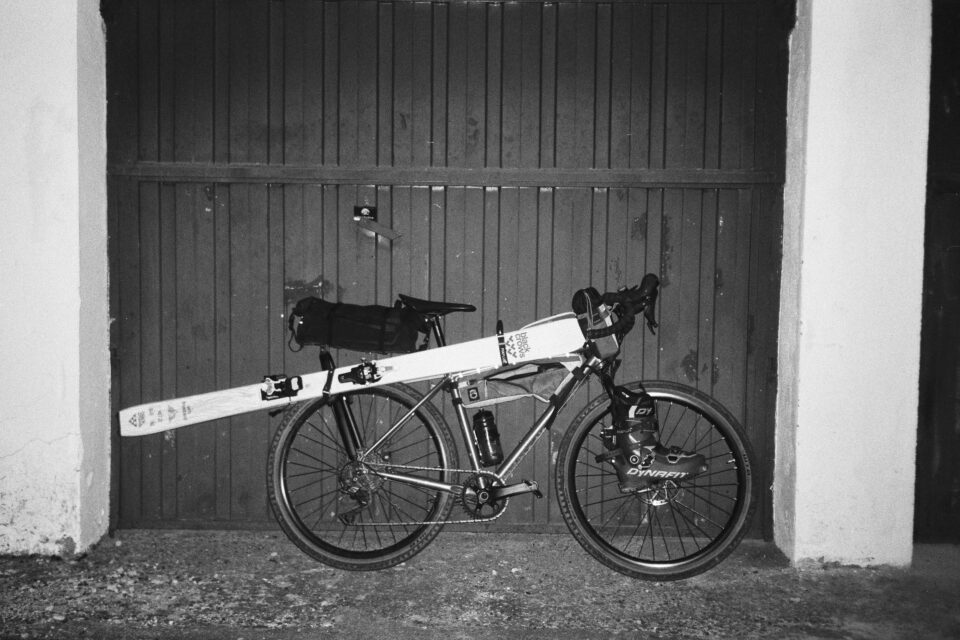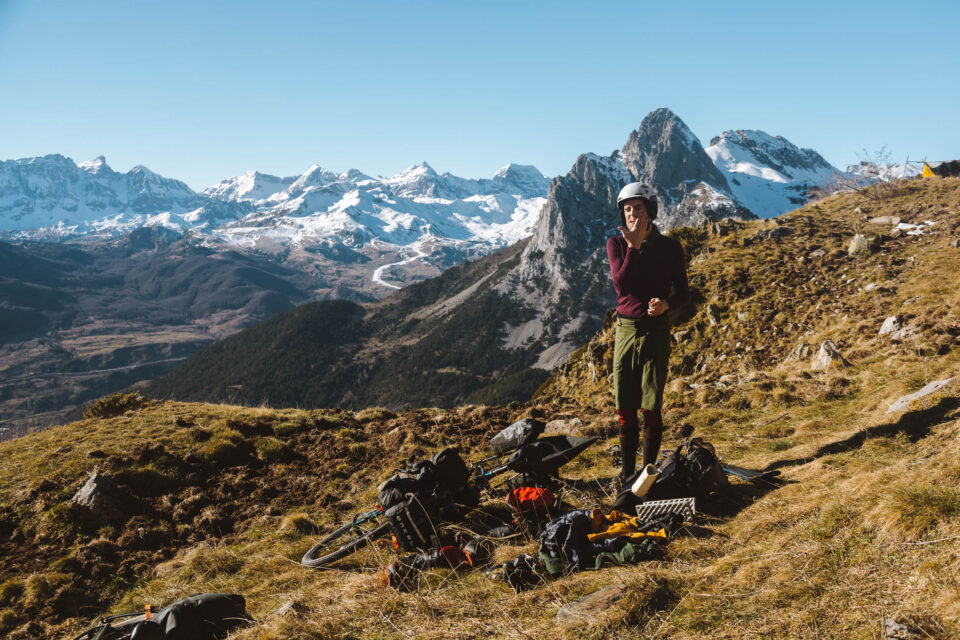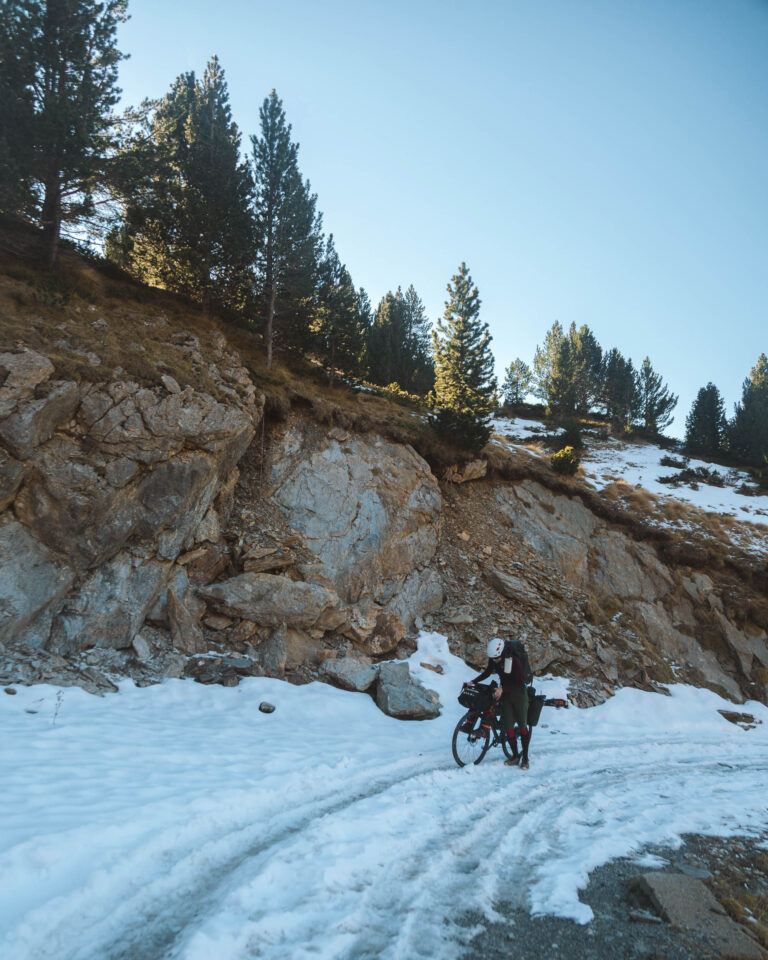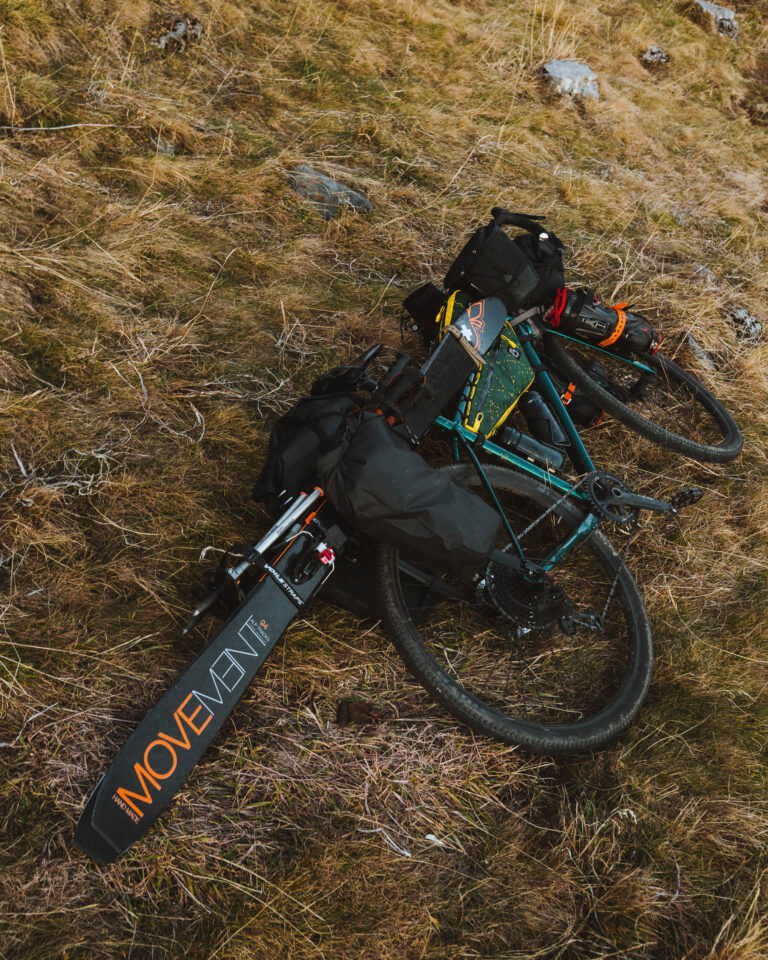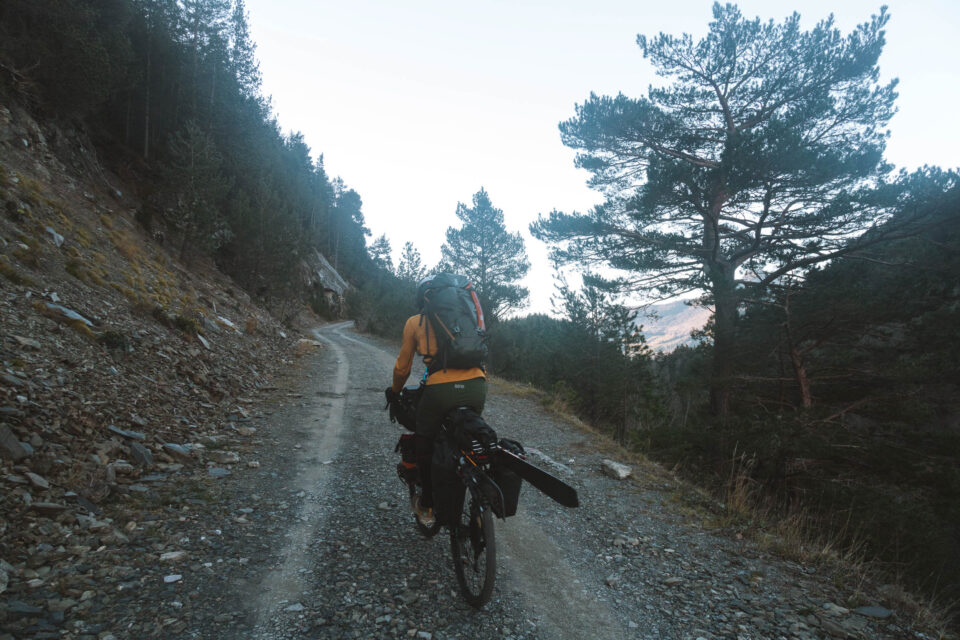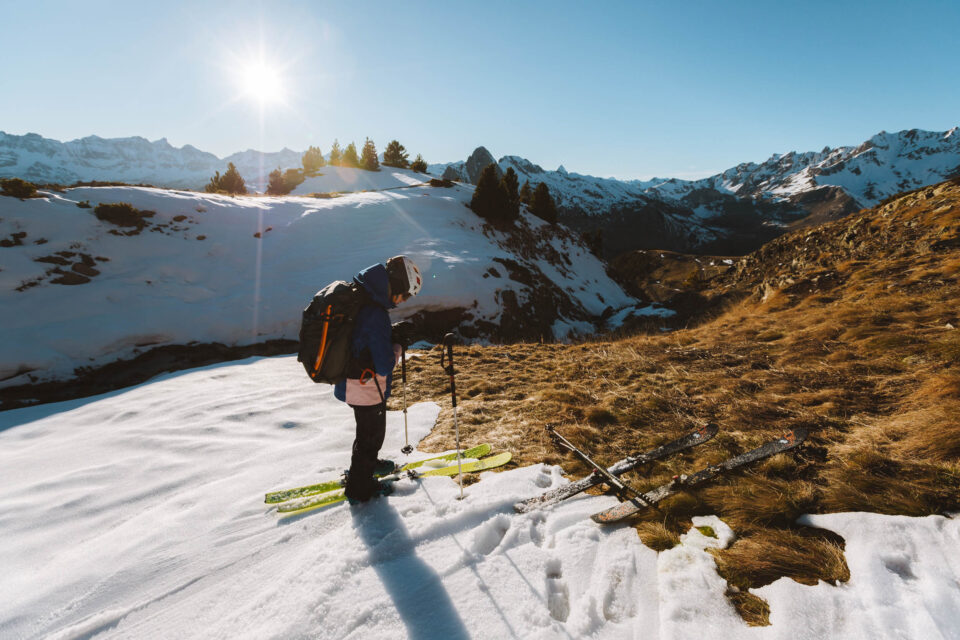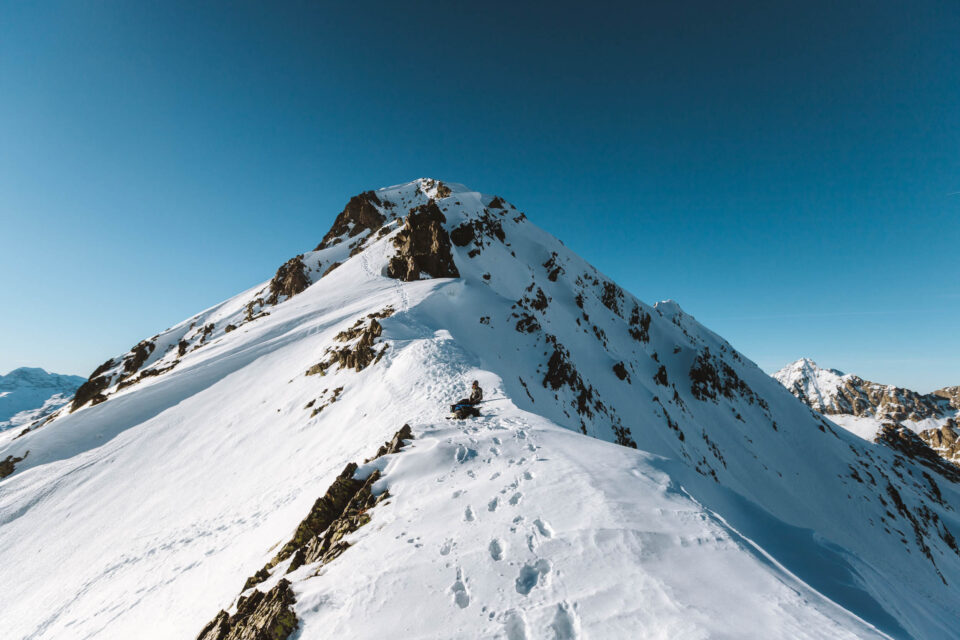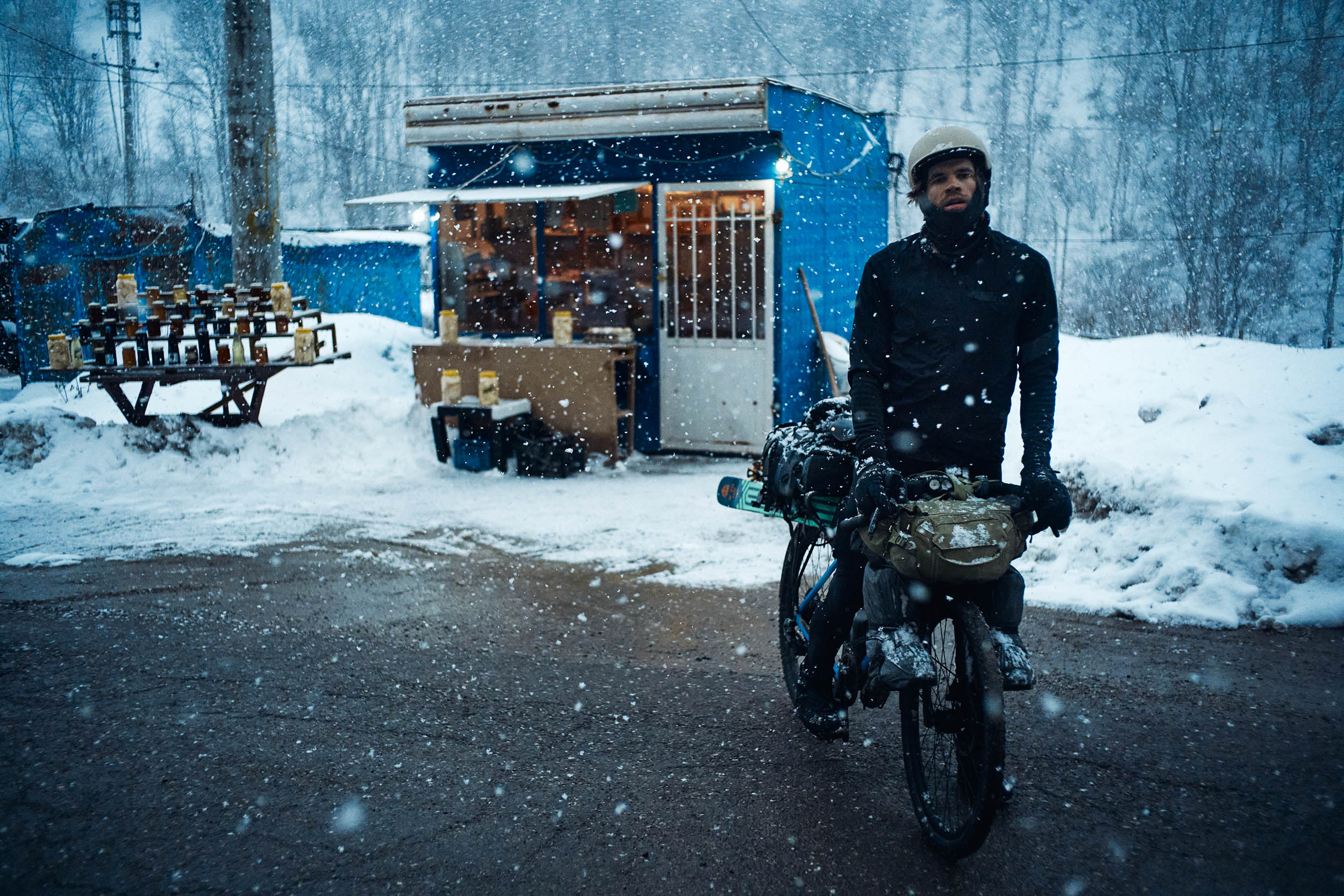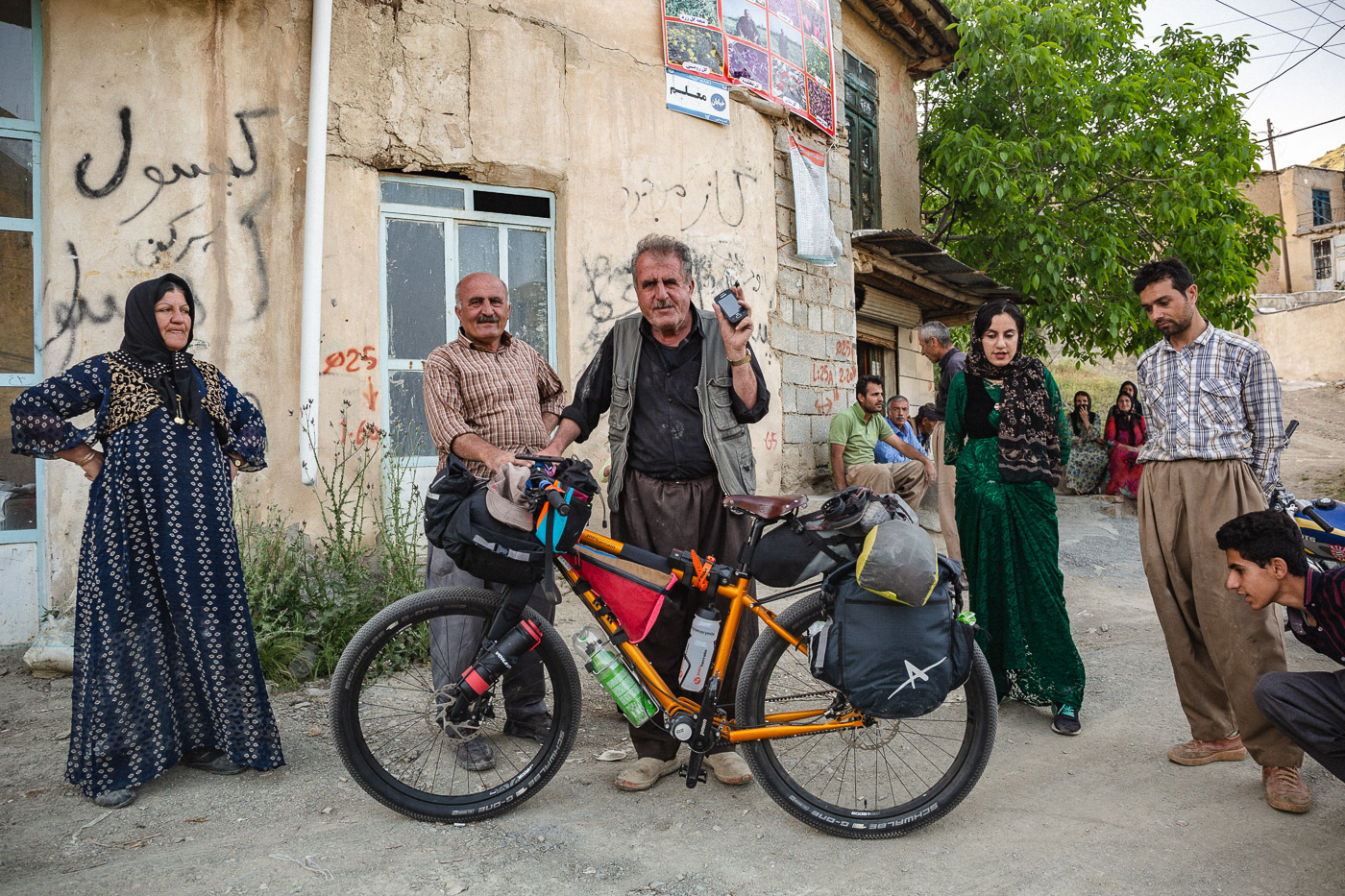Off-Piste: Bikepacking and Ski Touring the Pyrenees
Eager to combine her longtime passion for bikepacking with her budding love of ski touring, Ana Zamorano Ruiz planned a trip to a backcountry peak in the Pyrenees to try the concept. Find her story of learning to mix bikes and skis and gaining a whole new perspective on the adventure possibilities in her backyard here…
PUBLISHED May 3, 2023
Words by Ana Zamorano Ruiz, photos by Ana Zamorano Ruiz and Diego Borchers
Bikepacking and ski touring are two very different sports that nevertheless have quite a lot in common. I was crossing the Andes on two wheels when my desire to learn to ski properly first made itself apparent. I remember stopping in Santiago de Chile for a short time after an intense first part of my trip to Patagonia, where I met Andreu, one of the three people who hosted me in the capital during their summer holidays.
Andreu was a cyclist and also an avid skier. Having the Andes so close to the city, he and his friends headed off for adventures in the high mountains nearly every weekend. I joined them on a long weekend near a couple of glaciers in the Aconcagua Valley, near the Argentinian border. They shared a steady stream of wild winter stories in these three summer days. I vividly remember the photos, the locations they mentioned for ski touring, and how they said randonee, referring to ski touring itself.
After two years of living on my bike, I came back home with the clear idea that ski touring should be my next goal. To escape from the daily monotony of life off the bike, I visited a few friends who were living in the Dolomites, Switzerland, and the Pyrenees. We skied in these places that winter. Then I met Diego, who is now my partner, who has been skiing since he was little. It was a perfect match, not only for the nature of our spirits but for a chance to combine our favorite sports with the same approach and goal of searching for adventure in new places away from the crowds.
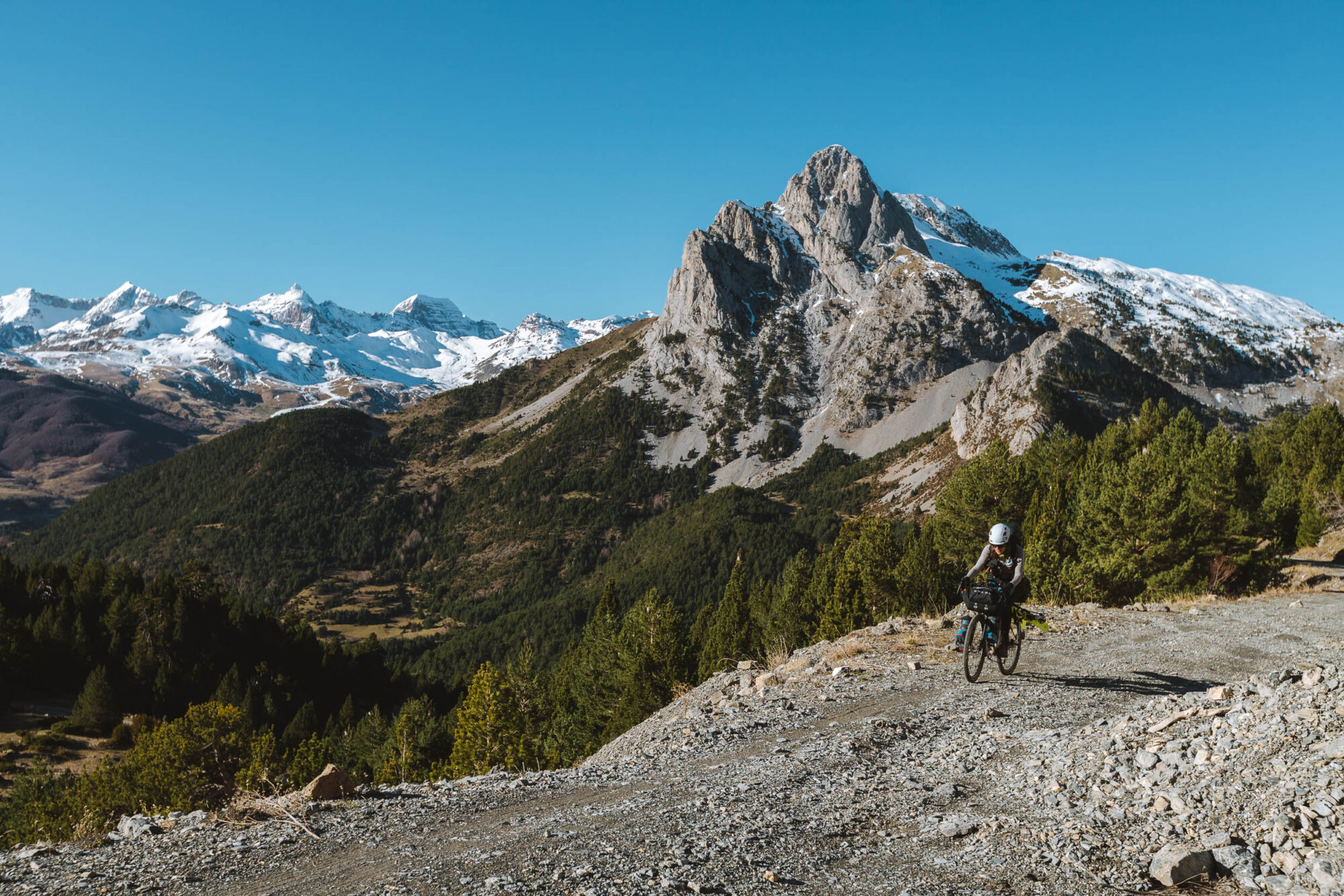
Having also spent some of the last season skiing in the central part of the Pyrenees, I felt ready for my first ski touring experience in the valley. From the first day we met, I suggested to Diego that we should combine ski touring with bikepacking as our friends Max and Jochen have done in the Balkans and across the Alps (find two of their amazing films linked at the bottom of this post). The catch was that Diego hadn’t tried bikepacking yet, so he was less sure if we could pull it off. After a busy season, he was worn out, too, so we kept the idea for the future. Even though my level of skiing wasn’t yet very good off-piste, I fully believed I could take on an adventure that combined skiing and bikepacking. Sometimes being daring counts for more than being cautious.
As the snow melted quickly in the winter of 2020-21, we enjoyed Easter skiing on the pistes and closed the season with some fun in the spring snow. We enjoyed the rest of the season by bikepacking across some isolated mountainous regions in Spain as training for our first big adventure on wheels together in Kyrgyzstan.
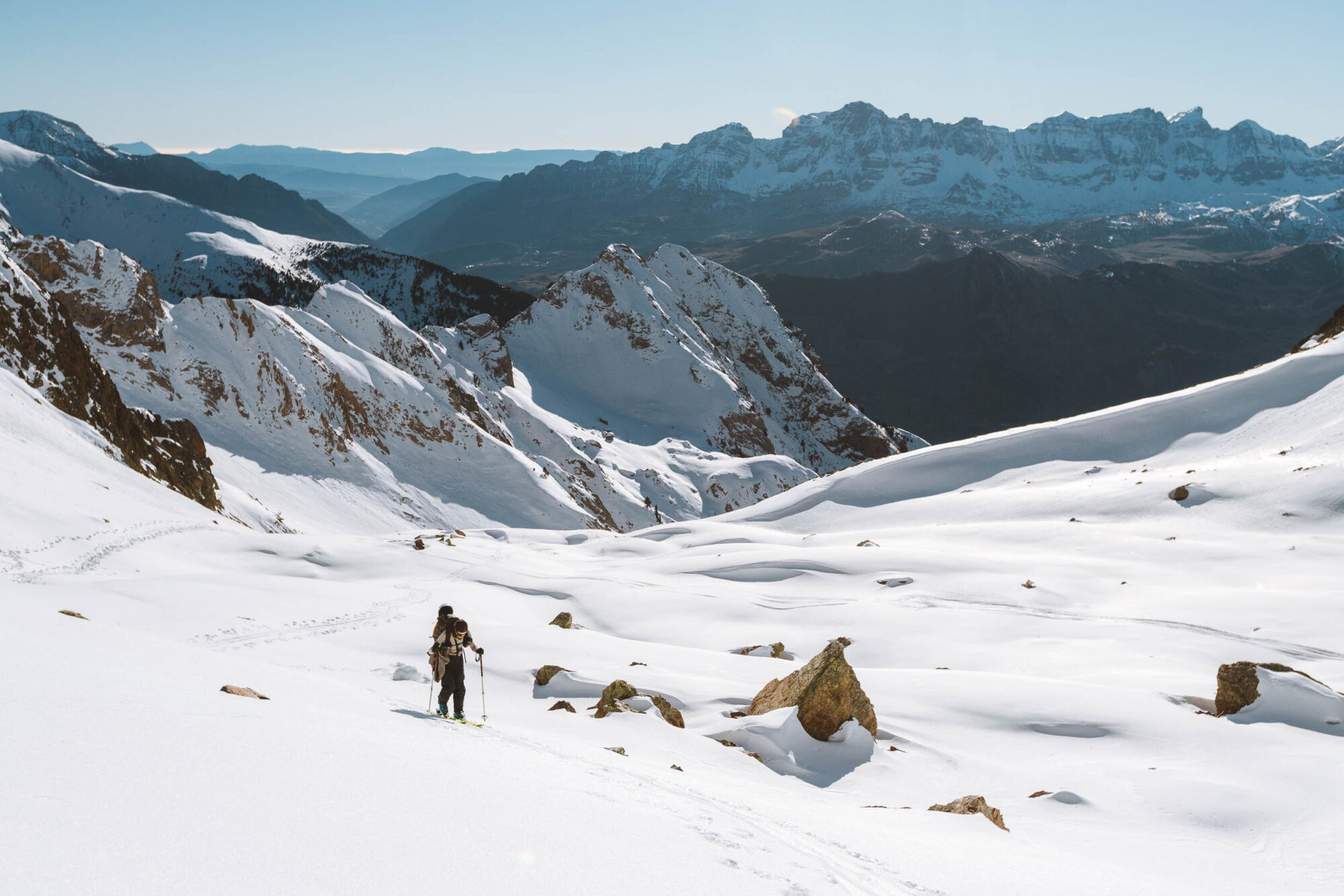
Unfortunately, when autumn rolled around, it still felt like summer. Europe was dry for months at was hit by a heat wave that seems like it’s becoming the new normal. Although we kept our fingers crossed for a better ski season than the previous one, it didn’t work out that way. My fingers were crossed, but the weather was still weird, even in December. And it wasn’t just the Pyrenees. The Alps and most of Europe were suffering from the same lack of snow. Winter had arrived, and the first snowfall wasn’t enough for skiing. The alpine/piste season took off with just a few paltry kilometers opened in most of the European resorts. The following few snowfalls weren’t enough to cover the valleys, and they only whitened the peaks above 2,000 meters (6,560 feet). Sure, there was some snow, but we needed to be creative to find it. As Diego knows the Pyrenees like the back of his hand, he designed a route on which we could finally combine some gravel paths with ski touring. The day finally arrived, and we were super excited about it.

We started preparing all the gear in the garage at our home base in the Pyrenees. Combining both sports for the first time was as difficult as it was exciting because it was essential not to forget anything and a bit of a puzzle to figure out how to carry it all on the bikes. We started by fastening the ski boots to our forks using a couple of cages with some straps. Then we attached the skis to our bikes with our Tailfin AeroPacks supporting them. We stashed our camping gear, stove, and some real food for dinner in our front bags, and our avalanche security gear, warm jackets, and cameras went into our backpacks. We planned to spend the night in an abandoned house we thought was open, so we wouldn’t need a shelter. Everything seemed to be working, at least on the paved road in front of our house.
The day of the trip was a brutal reality check. Arriving in the Tena Valley, we parked by the dam and got ourselves wrapped in warm layers before setting out in the early morning darkness. We had to get our bikes ready, adding the panniers and attaching the skis and boots to the fork and frame—all the things we’d practiced the night before. We were eagerly anticipating the trip but feeling apprehensive about it. Six hundred meters of gravel road awaited ahead.
The path was rideable, wide, and in mostly good condition. We could hardly feel our feet or fingers, so the first meters were a much-needed warm-up. Starting by climbing through the pinewoods gave us a broader and better view of where we were. The first issue came when one of my skis suddenly came loose when we were already halfway up the climb. The bumpy track did not help things, and the ski repeatedly falling off grew increasingly frustrating, not because we were in a rush but because we only had a few short hours of winter daylight, and the skiing conditions can vary greatly depending on the orientation of the slope.
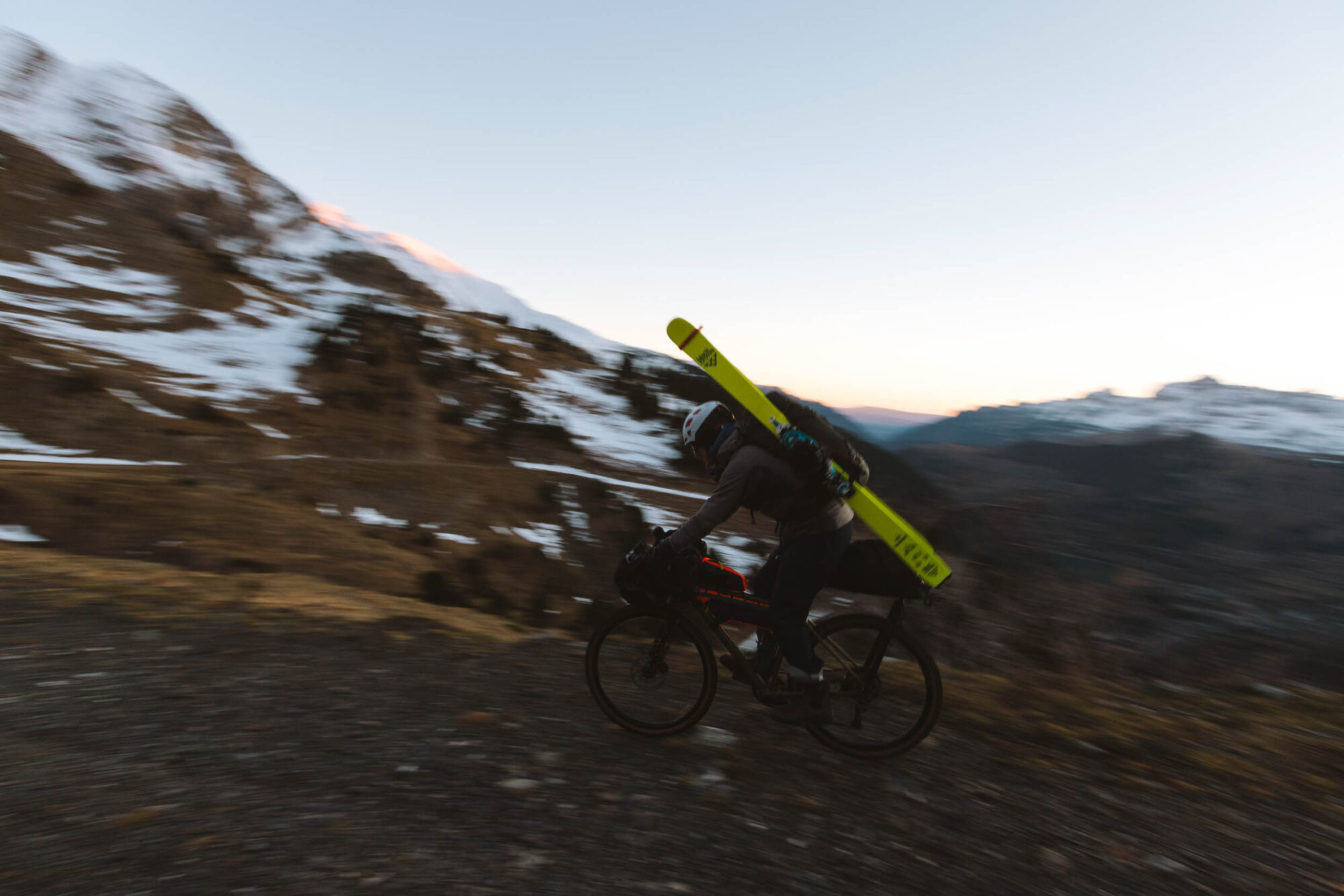
While bikepacking and ski touring both require mental preparation and good conditioning, the latter also requires more skill and terrain knowledge, not to mention avalanche safety. You must be aware of the conditions and the environment, be able to read the terrain and have the right skiing technique. In short, bikepacking and ski touring have plenty of adventure in common, but the big difference is how much risk is involved.

When we reached the top of the pass, we set our bikes on the grass and gave each other a big supportive hug. The sun was shining, and the scenery was breathtaking. We could see the Formigal ski resort in the distance while we ate some bread with sardines and tomatoes from a can. A 20-minute break for food, snacks, and water was enough. It was already 1 p.m., the perfect time to change clothes, put on our skiing boots, fix the skis to our backpacks, and leave the bikes behind. The distance to the first of the snow was short but steep enough to make us sweat.
The Pyrenees are probably one of the most underestimated mountain ranges in Europe. Not so much because of their natural features and rugged beauty but because Spain has long been promoted as the “Sun Country” with pictures of beaches, bars, and warm weather. Some parts of the country indeed provide this weather all year round. But, far from that, there are other parts where you can find glaciers, enjoy ski resorts, climb some proper mountains, and experience raw nature. We chose the Tena Valley for mixing bikepacking on gravel paths with ski touring because of the endless options it offers. Many gravel roads lead to the snow level and are the perfect ditching bikes for skis.
Geographers agree that this valley is the most diverse area in all of the Pyrenees. In the Aragón region, the area still has the remnants of glaciers, and coming from the west, as we did, you find the first 3,000-meter (9,850-foot) mountains of the range. That’s where you feel the Pyrenean landscape in its purest form, with some features that make it truly unique. The Balaitús is the roof of the area, and its peak towers at 3,144 meters (10,315 feet). However, it’s situated amid the most heavily touristed areas in the region, so we avoided it.
Choosing to ski Sanchacollons Peak paid off, as we were the only people on the mountain for the entire day. We felt tiny among the wide hillsides, steep walls, and awesome views from the high mountains to the Meseta Centra. Because Sanchacollons sits just in front of the Balaitús, we could also admire many of the important peaks of the valley. As soon as we gained a bit of altitude with our skis, we could also see Sierra de la Partacua, a neatly linear series of summits at around 2,700 meters (8,860 feet).
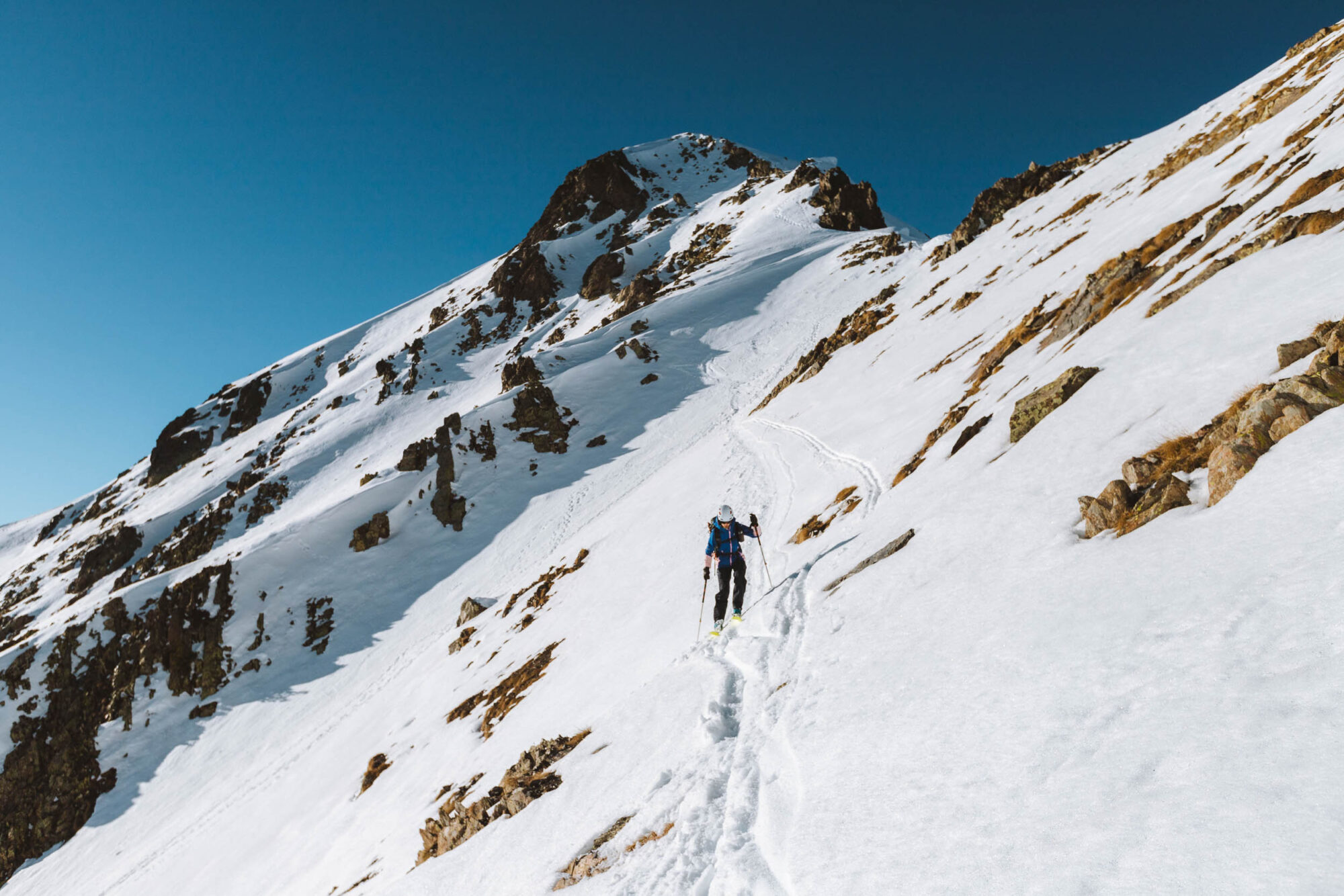
The more we climbed, the more expansive our perspective got, but we also felt exhaustion creeping in. Arriving at the ridge of the east face of Sanchacollons Peak, the views out toward Respomuso and Balaitus were breathtaking. We endured freezing conditions as we ate some snacks and rested briefly. The summit was just 10 meters (33 feet) from where we were, but having a tight schedule, we decided to avoid the risk of going to the top and got the skis ready for the descent back to the bikes.
We knew that all types of snow would be waiting for us on the way down. We’re used to it in the Pyrenees, as we generally don’t get the best snow. The first turns were steep and narrow, but the run eventually got wider where the snow was cooked by the sun, and we had some decent spring snow. We enjoyed ourselves until we were about halfway when the conditions quickly deteriorated. Turn by turn, we slowly and cautiously went down toward the bottom of the valley. We felt a dizzying mix of exhaustion and exhilaration.

“There is no such thing as bad snow, only bad skiers,” is an adage among skiers, and we were happy we passed the test. The light was indescribable as we neared the spot where we’d left the bikes. Not only were we treated to an absolutely amazing sunset, but we felt validated and grateful that we’d made the right decision not to climb to the top of the mountain, allowing us to get all the way back down safely with natural light. Sometimes a small decision can make all the difference in an adventure.
All that remained was to have another snack for a little strength before strapping everything back on the bikes and coasting back down the mountain in the brilliant blue-orange sunset light. We had to scrap our plan to spend the night in the abandoned building near our vehicle because it ended up being locked, though we got all that we came for and more during that long day out. We were okay with not being able to spend the night on the mountain.
This trip served as a valuable reminder that you don’t need to put your life on hold for weeks or months to fully live a great adventure. All you need is a good idea, a handful of hours, and the right playground for it. Areas close to home hold nearly infinite potential if you find the right way to enjoy them. After a warm shower, a proper meal, and some rest, we felt restored and ready for the next getaway, sure that there’d be more bikepacking and ski touring in our future.
Related Content
Make sure to dig into these related articles for more info...
Please keep the conversation civil, constructive, and inclusive, or your comment will be removed.








